Master of the Playing Cards
Animal suited playing cards engraved by the Master of the Playing Cards, Germany, c.1455

A unique set of animal suited playing cards, copper-engraved and uncoloured, by the “Master of the Playing Cards”, Germany, c.1450. The engravings are distinct and skillfully produced. The animal suit symbols, depicting characteristic mannerisms and behaviour, are laid out formally in a clear arrangement. Many of the images are printed from individual plates which are repeated on several cards in the same suit.
At first sight it appears that playing cards such as these may have served as generic models or design motifs to be used by students, craftsmen or artists. Maybe this is why the details and outlines are clearly legible and not overlapping. Furthermore, such figures of flowers, wild animals and birds recur almost identically incorporated into the border decorations and miniature illustrations of manuscripts or printed books, carvings or sculptures from the same period.
Striking examples can be seen in The Hours of Catherine of Cleves, the Giant Bible of Mainz and the Gutenberg Bible where many correspondences with the playing cards can be found.
The Hours of Catherine of Cleves


Left: border detail showing a heron from St. Michael Weighing Souls, illuminated by the Master of Catherine of Cleves, Utrecht, The Netherlands, c.1440. Morgan Library & Museum MSS M.945, f. 108v–M.917, p. 29. Original image here►
Both the manuscript border details can be identified in the three of herons card engraved by the Master of the Playing Cards.
below: border detail showing a heron from Pentecost: Judgment of Solomon, illuminated by the Master of Catherine of Cleves, Utrecht, The Netherlands, c.1440. Morgan Library & Museum MS M.917, pp. 52–53. Original image here►


Above: border detail showing a grazing deer which also appears in the playing cards. The Morgan Library & Museum, MS M.945, f.90r. (Click to zoom). Original image here►
The engraved playing cards
The engravings in the playing cards are very close in artistic conception and stylistic execution to the miniatures found in the manuscripts. However, in the manuscripts they are integrated into a composition but in the cards they are isolated. It also turns out that some of the manuscript illustrations may be earlier than the date of the cards, in which case other model books may have been used as a common source. The court cards are wearing the costumes worn at court.
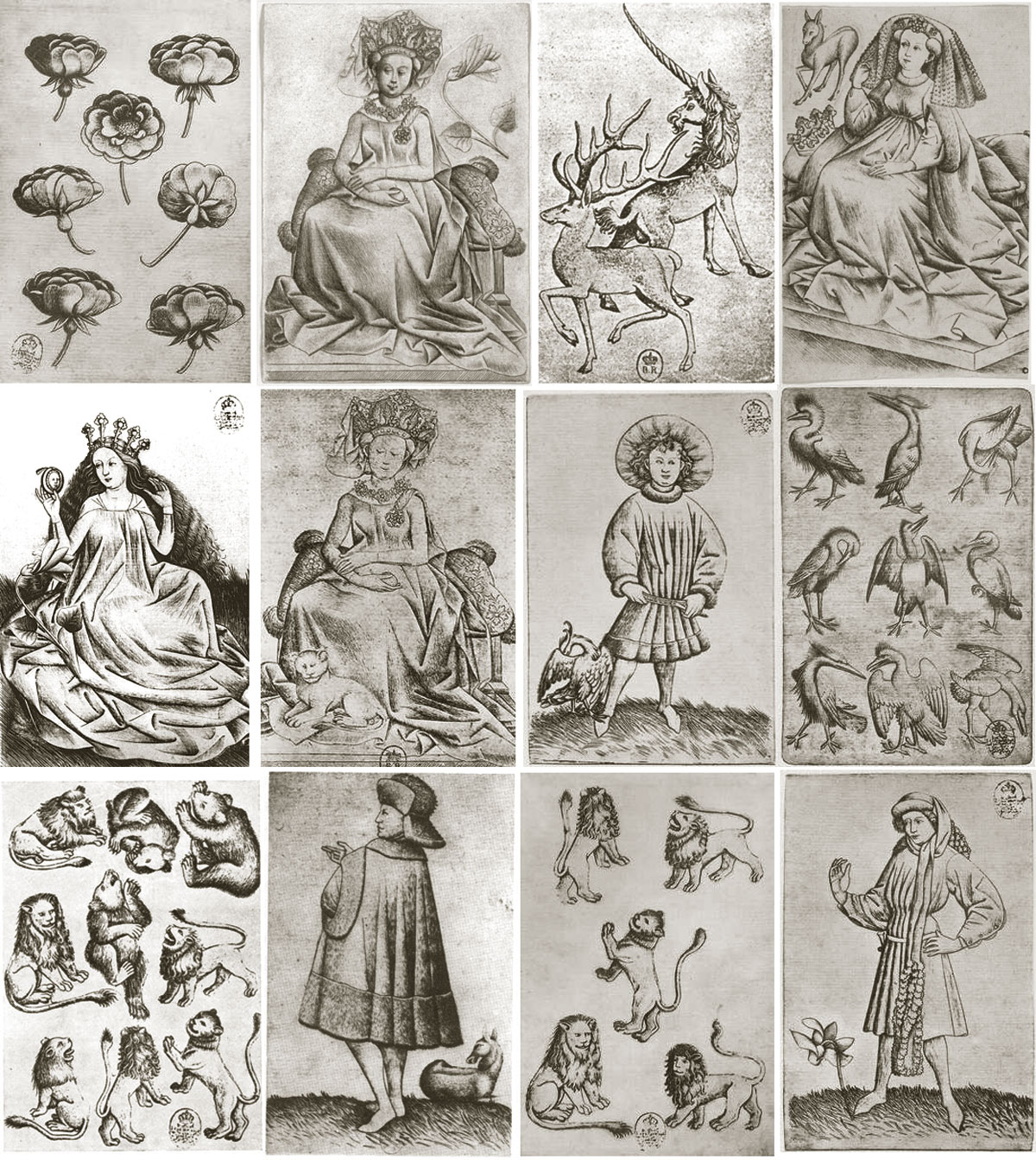
Above: roses, cyclamens, wild animals, deer and birds appear as suit symbols in these playing cards printed from intaglio plates by the Meister der Spielkarten (Master of the Playing Cards). The cards are not obviously produced as a coherent pack, in sheets of eight or twelve cards, but are produced as individual prints. Many of the prints are made up from several small plates assembled together.
The Giant Bible of Mainz and Gutenberg Bible
Lions and other animals, even small roses illuminated in the margins of the Giant Bible of Mainz, 1450s, and the Gutenberg Bible c.1455, suggest a common source to the cards engraved by the Master of the Playing Cards. In fact many more correspondences of similar images appearing in different manuscripts as well as in the playing cards have been found. The possibility exists that the Master of the Playing Cards and Johannes Gutenberg were working in closely related fields at that time and may have known each other (Lehmann-Haupt, 1966). Mainz was a vibrant centre of arts and crafts where ecclesiastical manuscripts of the highest quality were being written and illuminated. . Maybe the engravings were early attempts to find a mechanical means of reproducing decorative images and patterns in printed books, inspired by existing model books.





Above: a climbing bear, amongst cyclamens and roses, from hand-painted decorations in a copy of the Gutenberg Bible [William H. Scheide collection, f.160v, 1455] also appears on the nine of wild animals card engraved by the Master of the Playing Cards. The Scheide copy of the Gutenberg Bible contains a large number of miniatures which correspond with the playing cards. Further correspondences have been identified in other copies of the Gutenberg Bible and also in later Mainz printed Bibles.
Although many cards are now lost, there appear to have been several sets of cards attributed to “The Master of the Playing Cards” for the cards vary in shape and size. In one series the suits are bears, lions, stags, birds, flowers and leaves, and there are remnants of other series with frogs, dogs, rabbits, leopards, dragons and other mythical monsters (Hargrave, 1966). The number cards seem to run from one to nine in each suit, with three or four court cards in each suit: King, Queen, an Upper and/or Lower Knave. One possible explanation for the diversity of suit signs is that cards were made to order according to the desire of the buyer, but more likely they were from the standard repertoire of stock images, found in model books and used in various other artefacts, including books, sculpture or devotional prints. The engraver may have been working on a new method of printing such images inside books now, or soon to be, printed with moveable type by Johannes Gutenberg in Mainz, and had them printed into packs of playing cards for amusement.
It is ironical that the little copper plates, intended for marginal embellishment in a Bible or ecclesiastical volume, became a pack of playing cards – the Devil’s Picture Book.
REFERENCES
Hargrave, Catherine Perry: A History of Playing Cards and a Bibliography of Cards and Gaming, Dover Publications, New York, 1966
Husband, Timothy B: The World in Play, Luxury Cards 1430-1540, Metropolitan Museum of Art, New York, 2015
Lehmann-Haupt, Hellmut: Gutenberg and the Master of the Playing Cards, Yale University Press, New Haven and London, 1966
Plummer, John: The Hours of Catherine of Cleves, George Braziller, Inc., New York, [undated] c. 1970
Wikipedia: Master of the Playing Cards►
Below: church decorations, for so long the picture books of medieval education, show numerous examples of the way in which decorative artists borrowed designs from model books which also appear in alabaster panels, brasses, sculpture or illuminated books. The illustration below shows a carved misericord from the choir stalls in Chester cathedral, late XIV century.

See also: The Ambras Hunting Pack • The Stuttgart Pack • Master of the Banderoles • Master PW Circular Playing Cards • Early German Engraved Cards • The South German Engraver • The History of Playing-cards
By Simon Wintle
Spain • Member since February 01, 1996 • Contact
I am the founder of The World of Playing Cards (est. 1996), a website dedicated to the history, artistry and cultural significance of playing cards and tarot. Over the years I have researched various areas of the subject, acquired and traded collections and contributed as a committee member of the IPCS and graphics editor of The Playing-Card journal. Having lived in Chile, England, Wales, and now Spain, these experiences have shaped my work and passion for playing cards. Amongst my achievements is producing a limited-edition replica of a 17th-century English pack using woodblocks and stencils—a labour of love. Today, the World of Playing Cards is a global collaborative project, with my son Adam serving as the technical driving force behind its development. His innovative efforts have helped shape the site into the thriving hub it is today. You are warmly invited to become a contributor and share your enthusiasm.

Related Articles
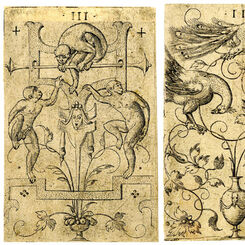
Virgil Solis
Remarkable pack of 52 animal-suited playing-cards designed and etched by Virgil Solis.
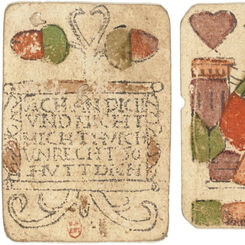
Early German playing cards
Some early examples of popular German playing cards from the XV and XVI centuries.
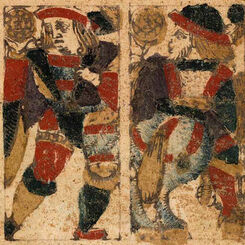
Toledo, 1584
Archaic Spanish-suited deck with 48 cards made in Toledo in 1584.
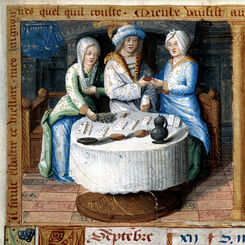
Gambling and Vice in the Middle Ages
Gambling and Vice in the Hours of Charles V: card-playing in the local tavern
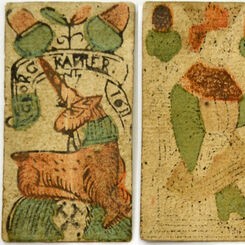
Georg Kapfler
Antique deck of old Bohemian playing cards of the German type manufactured by Georg Kapfler and date...
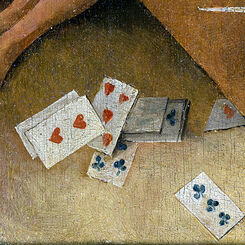
Hidden meanings in painting by Jheronimus Bosch
Medieval View of Gambling in the ‘Garden of Earthly Delights’ by Jheronimus Bosch
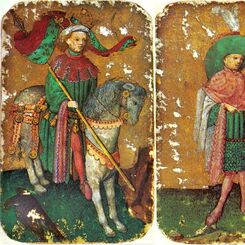
Stuttgart pack, c.1430
The luxury, hand-painted Stuttgart Cards (Stuttgarter Kartenspiel) dated c.1430, with suits of ducks...

Hans Sebald Beham
Playing cards designed by Hans Sebald Beham (1500–1550).
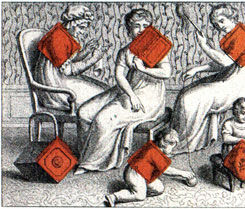
Cotta Transformation playing cards
In 1804, J.G. Cotta, a publisher and bookseller in Tübingen, Germany, produced the first set of tran...

Malta
The so-called ‘Dragon Cards’, with winged monsters on the four Aces, are an enigmatic aspect of earl...

Master of the Banderoles
Playing Cards by the Master of the Banderoles, one of the earliest professional printmakers.
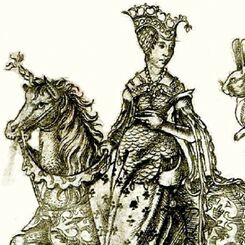
Master PW Circular Cards
Master PW Circular Playing Cards: roses, columbines, carnations, parrots and hares... everyday objec...

Phelippe Ayet, c.1574
Archaic, late medieval Spanish-suited playing cards printed by Phelippe Ayet, c.1574.
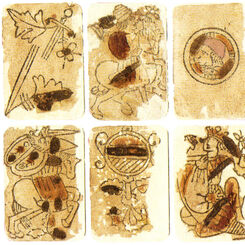
Baraja Morisca — Early XV century playing cards
Primitive Latin suited pack, dated by paper analysis as early XV century, which makes this one of th...
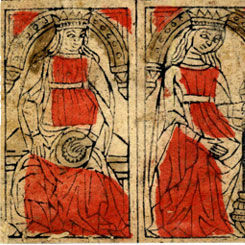
XV Century Italian Playing Cards
Cards from a pack of an early form of north Italian playing cards, with the swords back-to-back and ...
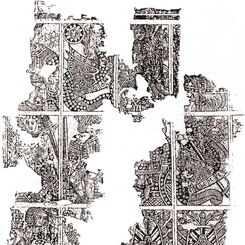
Early Spanish/Portuguese type
Fragment of a sheet of archaic Spanish-suited 'Dragon' playing cards found during restoration of a h...
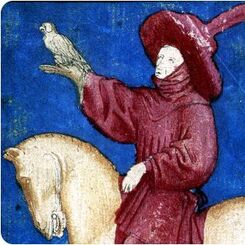
The Princely Hunting pack, c.1440
The Princely Hunting Pack, c.1440/45, is attributed to Konrad Witz and his workshop in Basle.
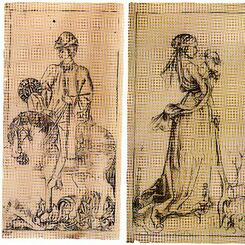
Early German Engraved Playing-cards
During the second half of the fifteenth century, with printing technology commercially established a...

Playing cards in the Upper Rhine region
Documentary evidence suggests that card playing established itself in Italy in 1376, and then spread...

South German Engraver
A pack of 52 cards with banner 10s, female 'Sotas', horsemen and kings, the pack was engraved in the...
Most Popular
Our top articles from the past 60 days






















